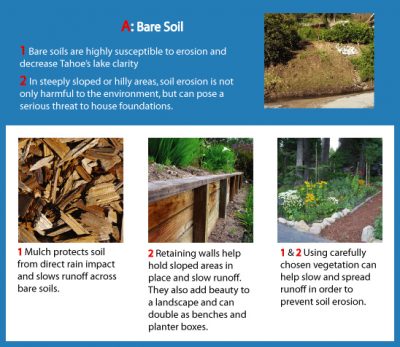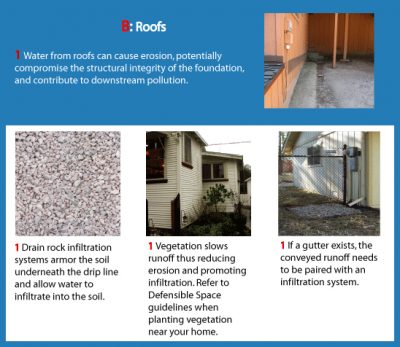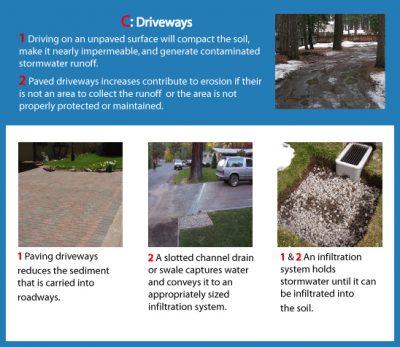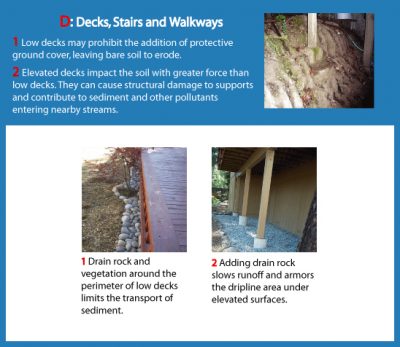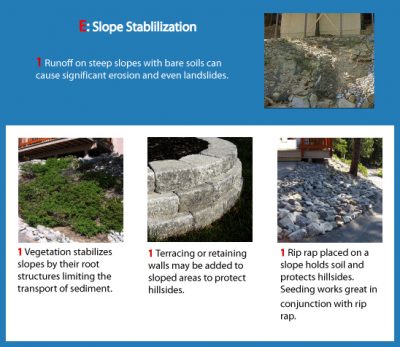Best Management Practices (BMPs) improve water quality by reducing soil erosion and capturing polluted water before it enters Lake Tahoe. The intent of BMPs are to help designed landscapes better mimic their natural surroundings, reducing the amount of dirt, sediment, and nutrients that flow into Lake Tahoe. Science has shown that fine sediment coming from developed areas causes most of the lake’s clarity loss. Implementing BMPs on existing development is a critical step toward improving Lake Tahoe’s water quality.
BMP Maintenance
BMPs need routine maintenance to keep them effective. Below are a few tips on keeping your BMPs in working order:
Visually inspect all infiltration areas to be sure they are still allowing infiltration.Remove trash and debris from the surface of the gravel.
Gravel trenches and infiltration systems will eventually become clogged with fine sediments and will need to be removed, sifted clean and replaced.
BMP design elements such as borders, filter fabric, sediment traps and drain clean-outs will reduce this necessary maintenance.
Visually inspect drains and swales after storms to make sure that they are not blocked with debris.
Remove debris as necessary. For drains without a removable grate, use a vacuum to remove debris. Don’t flush debris with a high-pressure washer or hose, as this will clog the infiltration system.
Vegetation must be healthy in order to provide for adequate filtration and nutrient uptake and be in line with defensible space guidelines.
The soil between plants should be covered with one to two inches of mulch to protect soil and also to insulate plant roots and conserve moisture.
Links and Documents
